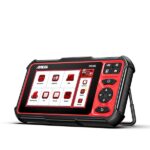The allure of boosting your car’s performance with a simple plug-in device is strong. OBD2 chip tuning boxes promise increased horsepower and fuel efficiency with minimal effort. Among these, the “Nitro OBD2” and similar devices have gained attention. But do these boxes live up to the hype, or are they just sophisticated-looking scams? Let’s delve into a review of OBD2 chip tuning boxes to separate fact from fiction.
Many of these “plug-and-play” devices claim to remap your car’s Engine Control Unit (ECU) to optimize performance. They often boast custom designs for specific car models, like the ChipPower box marketed for the 124 Spider, aiming to appear more advanced than generic options like the budget-friendly “Nitro OBD2” dongle.
Image of a ChipPower OBD2 chip tuning box, marketed for car performance enhancement.
However, the reality behind many OBD2 chip tuning boxes is far less impressive. Experts and in-depth analyses reveal a stark truth: these devices often do little to nothing to actually improve your car’s performance. The sophisticated appearance, like that of the ChipPower box, can be misleading. The internal workings are frequently closer to a simple circuit board with blinking LEDs, designed to give the impression of activity during installation.
Internal components of a Nitro OBD2 chip tuning dongle showing a simple circuit board, highlighting the lack of complex tuning capabilities.
The “Nitro OBD2” dongle serves as a prime example. Despite claims of ECU remapping, investigations, including a video by Mighty Car Mods, have demonstrated that these devices are essentially scams. Legitimate ECU tuning requires rewriting the code within the ECU to adjust parameters like fuel tables. A simple plug-in module lacks the capability to perform such complex operations. Instead, these boxes often contain a basic program that triggers LED lights to blink, creating a visual illusion of functionality without any actual engine performance modification.
Detailed reverse engineering efforts, like the one documented by Quarkslab, further confirm the deceptive nature of devices like the Nitro OBD2. These analyses reveal that the boxes primarily function as LED blinkers, responding to voltage from OBD2 pins without sending any performance-altering signals to the car’s systems. The blinking patterns, triggered by different OBD2 pins, are purely for show and have no impact on engine tuning.
Numerous videos online further expose the inner workings of Nitro OBD2 and similar “light flasher scams,” solidifying the consensus among automotive experts: for genuine performance gains, steer clear of these generic OBD2 chip tuning boxes and seek out reputable, vehicle-specific tuning solutions.

